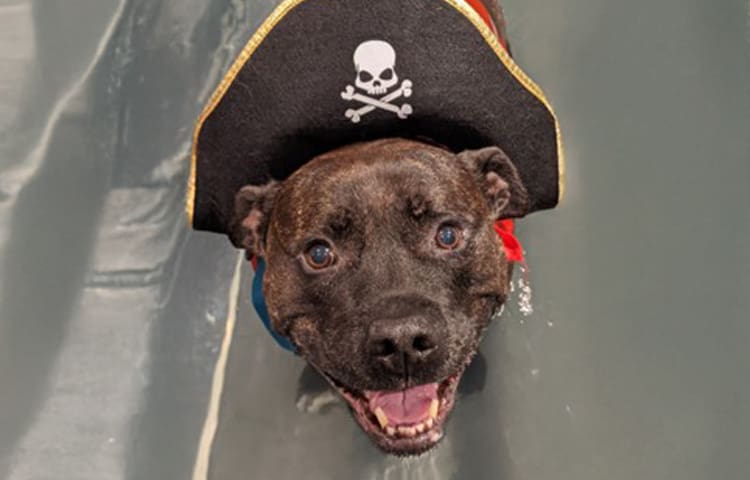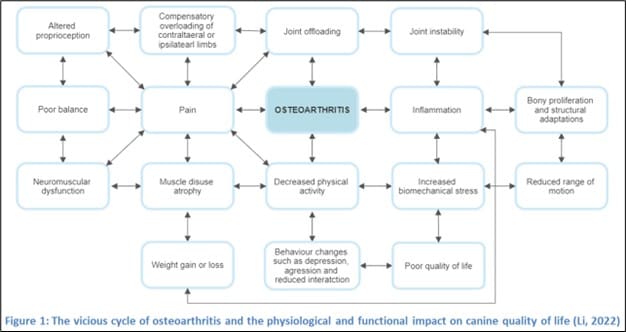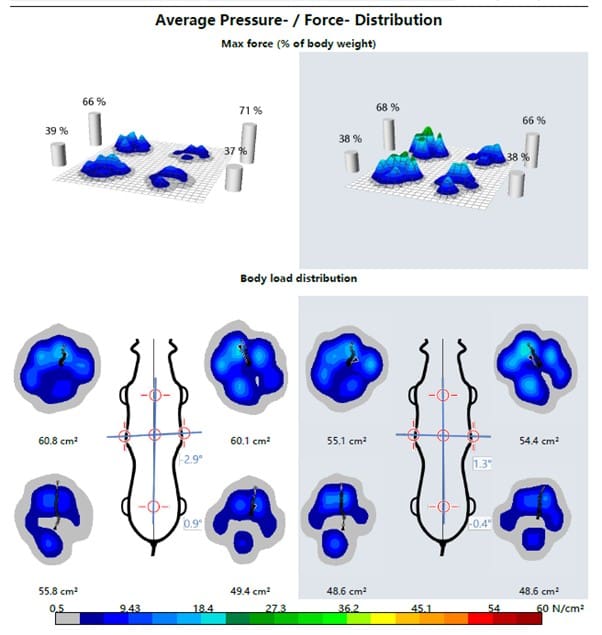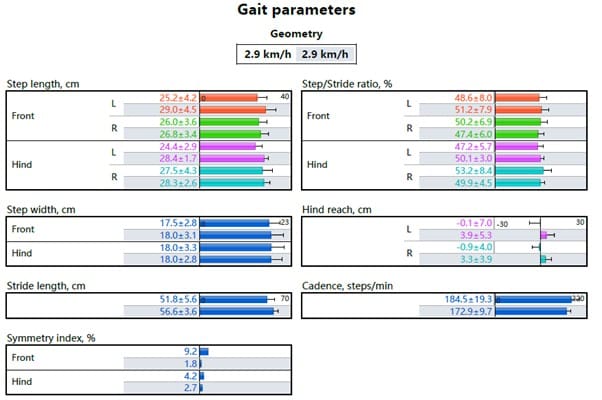10 common pet health issues in Australia (and how to prevent them)
Learn 10 common pet health issues in Australia and how to keep your pet healthy and protected.
Read more23 May 2025
Doc is an 11-year-old male neutered Staffordshire Bull Terrier, weighing 28 kg, with a history of bilateral elbow dysplasia and right cranial cruciate ligament rupture. He underwent tibial tuberosity advancement (TTA) surgery in June 2020, which subsequently led to multisite osteoarthritis, as diagnosed by his veterinarian.
For pain management, Doc received meloxicam intermittently and three-monthly injections of Cartrophen, a disease-modifying osteoarthritis drug (DMOAD) used to treat non-infectious and traumatic arthritis in dogs.
He initially presented for review due to a limp in his left hind limb, decreased mobility on walks, difficulty navigating stairs, trouble getting up, and reduced energy levels after play.

Doc’s physical activity initially consisted of two 30-minute pavement walks per day, but his fatigue has since reduced this to one 15-20-minute walk. His owners sought physiotherapy to alleviate pain, support healthy aging, and maintain his strength and mobility for as long as possible.
Osteoarthritis is a degenerative joint disease caused by instability, incongruity, and uneven load bearing. It creates a cycle of inflammation, bony proliferation, and disuse atrophy, leading to increased pain and limited function (Kuyinu et al., 2016).

On Assessment post-TTA surgery, Doc exhibited muscle atrophy in his right quadriceps, gluteal, and hamstring muscle groups, with a measured thigh musculature difference of 4 cm (figure 2).
He also demonstrated decreased range of motion and stiffness in his right hip on extension and was mildly resistant to full hip and stifle flexion, though he maintained full stifle extension. Doc showed decreased right hind limb weight bearing, particularly with fatigue, and would slightly lift his right hind limb after walking for a few minutes.
On palpation, he had increased tension in his lumbosacral epaxial muscles bilaterally and tenderness in his right hip flexor.

Doc has been undergoing a multi-modal physiotherapy program at the Animal Rehab Klinik – members of the Australian Physiotherapy Association (APA).
His treatment plan includes:
Physiotherapy has been shown to provide long-term pain relief, improve function and mobility, and enhance overall quality of life (Capon, 2021).
Doc’s rehabilitation exercises included:
After a three-month intensive program, Doc showed significant improvements. His owners reported that he had returned to his normal activity level of 30-minute daily walks without fatigue or limping. They also modified his activities to reduce explosive play and adjusted his home environment to support his aging needs.
Doc regained full hip extension, hip and stifle flexion, and equal weight-bearing bilaterally. As seen on his gait analysis scan (Figure 3) during his progress report, based on a walking speed of 2.9 km/h showed reduced surface area contact with equal body load distribution bilaterally, indicating increased stability. He also demonstrated increased step length in both forelimbs and hind limbs bilaterally.
Notably, compared to his initial scan, Doc extended his hips during stride phase by an additional 3.6 cm (SD ±4.6 cm), enabling an average increase in step length of 4.4 cm (SD ±4.6 cm). Initially, he took shorter, more frequent steps, but post-rehabilitation, he reduced his cadence by 12 steps per minute, reflecting improved gait efficiency. This was also evident in his centre of pressure trajectories, which became more consistent and fluid.

Doc continues to visit the clinic for strength maintenance and wellness support to ensure he remains healthy and active for as long as possible.
Tibial Tuberosity Advancement (TTA) surgery is a specialized procedure designed to restore mobility in dogs suffering from cranial cruciate ligament (CCL) rupture. This surgery is particularly beneficial for larger and more active dogs with either a full or partial ligament tear. Postoperative rehabilitation is crucial for optimal recovery, including passive range-of-motion exercises and targeted physiotherapy to strengthen the affected limb. Ideally, physiotherapy should be performed multiple times a day, focusing on the stifle joint when time is limited.
Cruciate ligament ruptures often result from a combination of factors such as aging, obesity, poor physical condition, breed predisposition, or sudden twisting movements during activity. Unlike traumatic injuries, most CCL tears develop gradually over time, leading to progressive lameness and discomfort if left untreated.
Comprehensive treatment, including surgery and physiotherapy, is essential for helping dogs regain strength and mobility after a cruciate ligament injury. Petcover understands the importance of providing financial support for both the surgical procedure and post-operative rehabilitation.
As long as there is no prior diagnosis or pre-existing condition, our dog insurance covers cruciate ligament surgery and physiotherapy following the applicable waiting periods.
Find out more about dog insurance or speak with our friendly team at 1300 731 324.
To find your nearest Animal Physiotherapist, search the directory page.